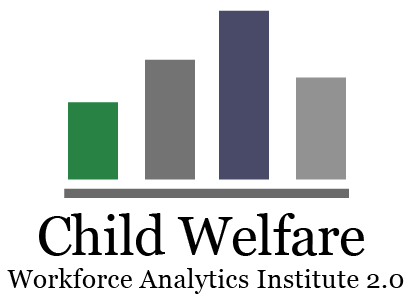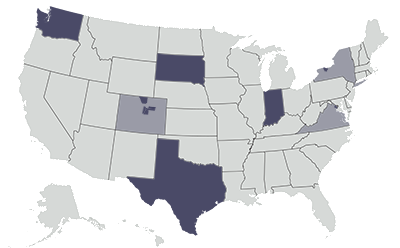QIC-WD Child Welfare Workforce Analytics Institute 2.0


An Overview of The Institute 2.0
In early 2022, the QIC-WD selected a mix of state and county public child welfare agencies to participate in a short-term Child Welfare Workforce Analytics Institute (The Institute 2.0). Similar to the Institute operated in 2020, the goal is to build partnerships between child welfare and human resources (HR) professionals to examine and address child welfare workforce challenges. The Institute 2.0 benefits from the resources created as part of the first Institute and adds an emphasis on how data can be used to address questions about diversity, equity, and inclusion in the workforce. Capitalizing on workforce data allows agencies to answer questions such as:
- Which recruiting methods or sources lead to the most qualified candidates? Which ones are most effective at finding candidates who are more likely to stay with the agency?
- How do candidates’ previous experience or educational background relate to subsequent job performance? Is there potential bias in the hiring process?
- What is the racial and ethnic diversity of your applicant pool? What is the racial and ethnic diversity of your workforce? How do these compare? Does turnover vary by race or ethnicity? Does your workforce reflect the diversity of the children and families your agency serves?
- What is the internal turnover rate? What is the involuntary turnover rate?
- What factors predict whether someone will stay or leave?
- Is a new program effective at improving workforce outcomes?
The selected agencies will participate in multiple webinars throughout the year. Each agency is assigned a QIC-WD representative to provide coaching and individualized support as they develop action plans to improve an aspect of each agency’s workforce data analytics capacity and practice.
Selected agencies:
- Colorado Department of Human Services and Colorado State University Social Work Research Center in collaboration with Adams, Arapahoe, Denver, Douglas, Jefferson, and Larimer county departments of human services
- Fairfax County (VA) Department of Family Services
- Indiana Department of Child Services
- Monroe County (NY) Department of Human Services, Child and Family Services Division
- South Dakota Department of Social Services
- Texas Department of Family and Protective Services
- Washington State Department of Children, Youth, and Families
(hover over each selected site to display the name)
